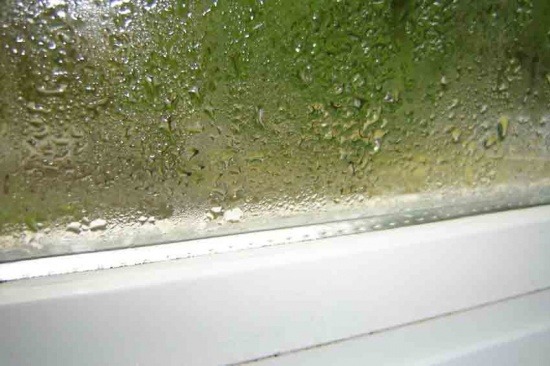MENU



When you wake up in the morning, do you see some condensation on the outside of your windows? This is a pretty common occurrence, especially among Michigan home owners. Michigan is known for its warm, humid summers, and condensation is simply moisture that has condensed out of the humid air. As a homeowner, here are five facts you need to know about exterior window condensation.
1. Exterior condensation does not mean your windows are damaged.
You may have heard that condensation is a sign you need to replace your windows. This is only true of condensation that appears between the glass where you are unable to wipe it away. Condensation that builds up on the outside of the window, on the other hand, is not worrisome. In fact, it indicates that your windows are doing their job. The windows are keeping the heat out and allowing your home to remain cool. When the warm outside air hits your cool window, moisture condenses out of the air. Exterior condensation actually becomes more likely as window efficiency increases, which is why some homeowners only start noticing it after they have their windows replaced.
2. Exterior window condensation evaporates quickly.
You might worry that frequent exposure to moisture in the form of exterior condensation will harm your windows. This is not typically a problem. There’s usually some breeze outside, so the condensation will not linger for long enough to cause damage. This is especially the case when you have new replacement windows made from a composite material like Fibrex®, which resists rot and moisture damage even without painting or sealing.
3. Condensation can leak in through damaged windows.
The only time you need to be concerned about exterior condensation is if your windows are already old and damaged. If the window sash is deteriorated and there is space between the glass and the sash, the condensation may leak in between the windows. This is a common problem with vinyl windows, since vinyl may crack when exposed to changes in temperature. Once moisture is between the windows, it won’t evaporate easily, and it may lead to mold growth and an accelerated rate of deterioration.
4. Encourage condensation to evaporate by moving plants.
If you are worried about exterior condensation seeping in through older, damaged windows, a good temporary fix is to relocate any plants or other objects that are in front of the window’s exterior. This will increase the airflow past your Michigan home so that when condensation does appear, it will evaporate quickly.
5. Cleaning your windows will make condensation less obvious.
When condensation forms on a dirty window, it then sometimes drips down the window, carrying the dirt along with it. This causes a line of dirt to form along the base of the window. If you clean your windows more often, you won’t notice the condensation or the patterns it leaves in the dirt. You can clean most modern windows from the inside. Try using a squeegee and window soap rather than window cleaner and a rag as this technique leaves fewer streaks.
If your new windows are developing exterior condensation- especially between panes- do not worry; this is completely normal and means they are efficient as can be. If your old windows are developing condensation, consider this one more reason to replace them. Contact Renewal by Andersen to schedule a free consultation in your Michigan home.